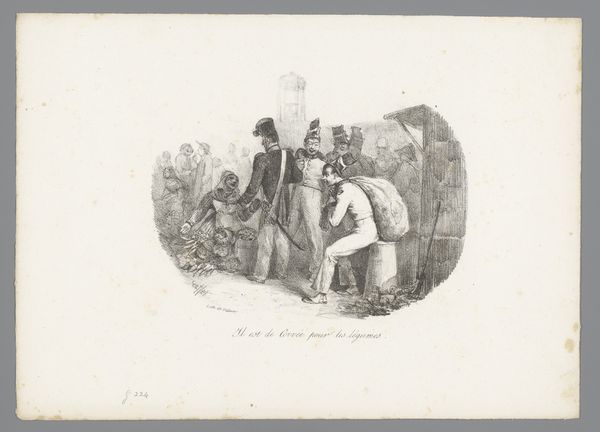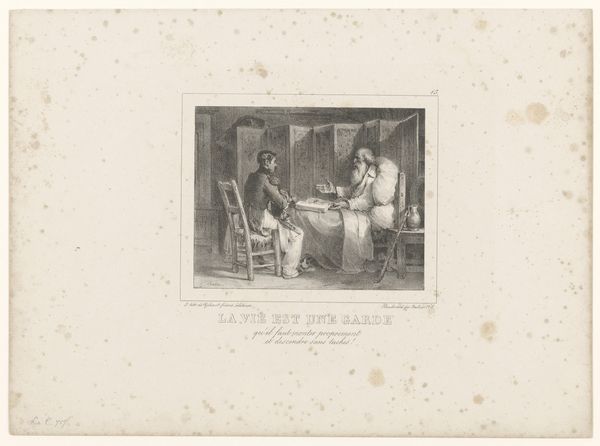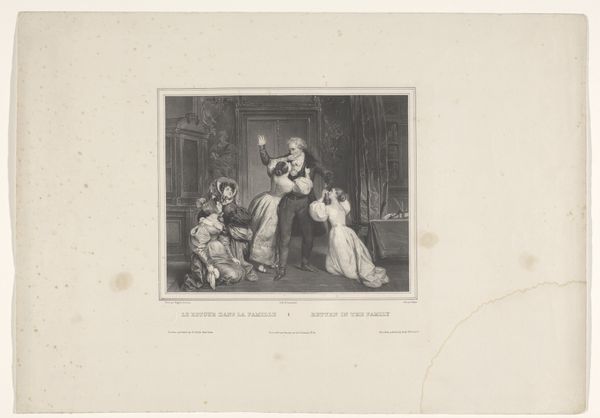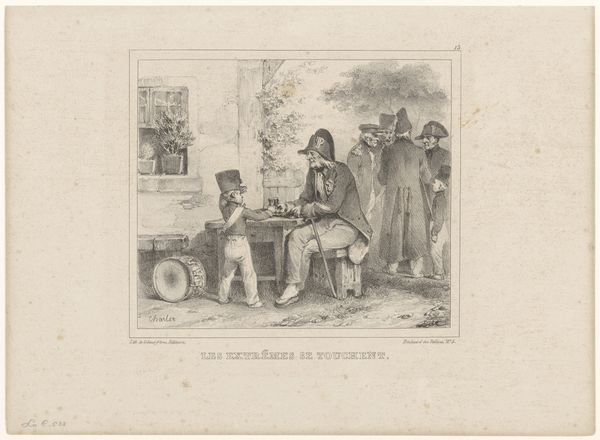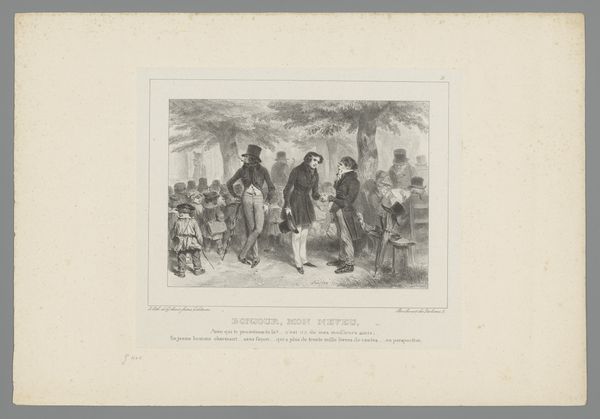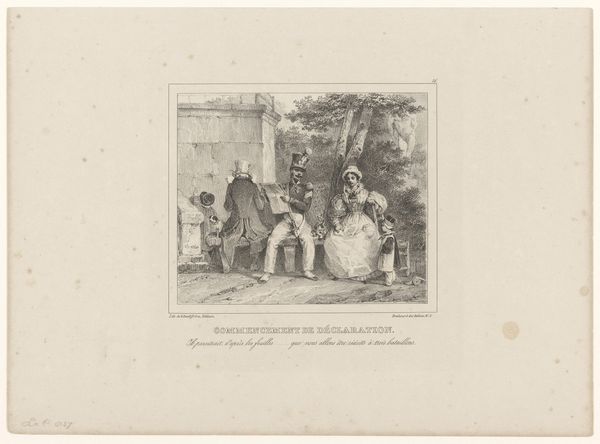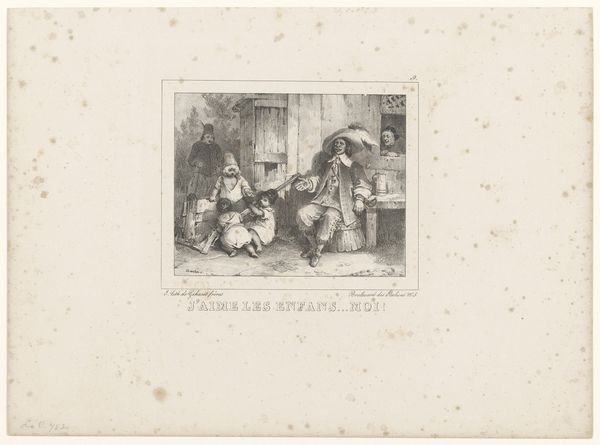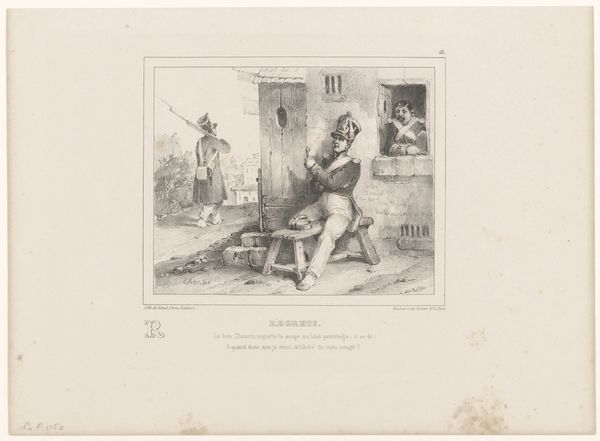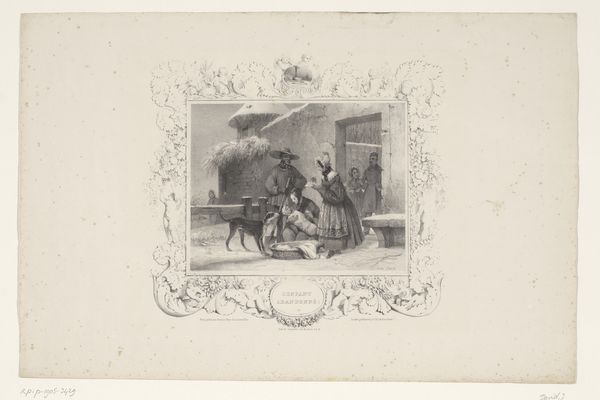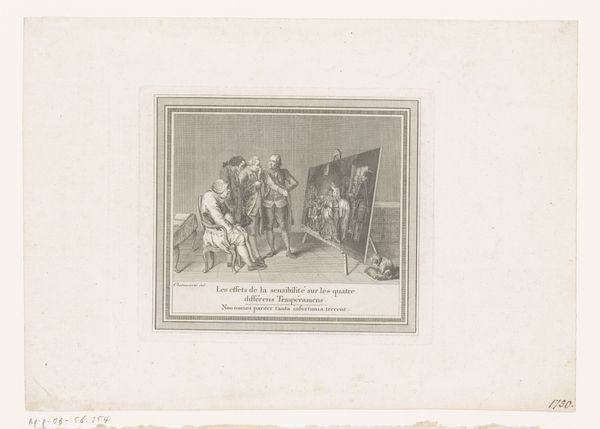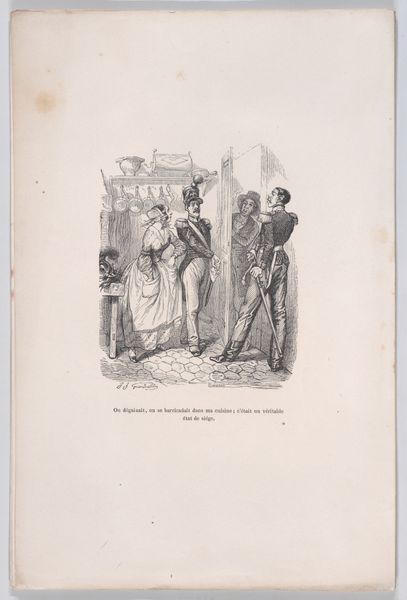
Man met bon in de hand komt de huur halen bij vrouw met twee kinderen 1836
0:00
0:00
augusteraffet
Rijksmuseum
print, engraving
#
narrative-art
# print
#
landscape
#
child
#
genre-painting
#
engraving
#
realism
Dimensions: height 289 mm, width 421 mm
Copyright: Rijks Museum: Open Domain
Curator: The somber scene before us, titled "Man met bon in de hand komt de huur halen bij vrouw met twee kinderen," or "Man with voucher in hand collecting rent from woman with two children," was completed by Auguste Raffet in 1836. Editor: It's overwhelmingly melancholic. The woman's gaze and the almost confrontational stance of the man… it immediately speaks of hardship. The grayscale adds to that stark feeling. Curator: The emotionality is heightened by the fact that it’s an engraving. Prints like this were easily disseminated in the 19th century, enabling Raffet to capture and broadly broadcast such scenes of everyday life. It’s genre painting meeting social commentary. Editor: It certainly draws the viewer into the difficult conditions of the urban poor during the Industrial Revolution. One can assume this is somewhere in Europe, but how widely did economic disparity inform this style? Was the social role of such prints to ignite conversation? Curator: Indeed, the Realist style emphasizes that very tangible societal observation. Raffet's choice to present this intimate domestic moment to the public also provokes discussion about charity and reform during the period. Beyond simple social representation, there’s a story of complex visual codes embedded here. Editor: And consider that the rent collector, while perhaps embodying institutional power, is himself caught within a larger socio-economic web. He likely earns little more than the poor family and his work isn’t of much personal enjoyment. Is this art about blame, or visibility and shared acknowledgement of the conditions? Curator: The scene holds many layers, precisely because its symbolism invites introspection about our roles and positions, no matter the century. Editor: Precisely. Art like this, even today, can reframe current views on what visibility actually means. Curator: Well said. Thanks for sharing your thoughts. Editor: Likewise. These explorations always leave a lasting mark.
Comments
No comments
Be the first to comment and join the conversation on the ultimate creative platform.
